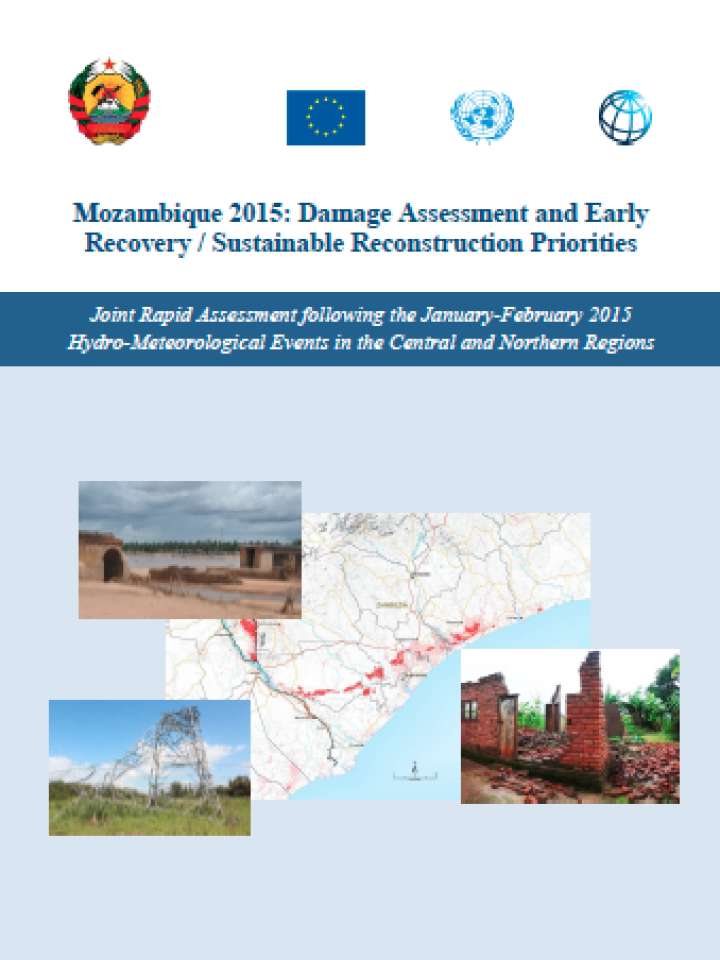Mozambique 2015: Damage Assessment and Early Recovery / Sustainable Reconstruction Priorities
From January to April 2015, Mozambique experienced prolonged heavy rain, which contributed to the rising of water levels in the Zambezi, Licungo and Shire River basins, exposing the population to flooding. Factors which contributed to the high level of flooding are: (i) heavy rainfall; (ii) flat terrain; (iii) high tide; and (iv) inappropriate drainage infrastructures.
The objectives of this Assessment is to: (i) evaluate the impact of the events on the population and infrastructure; (ii) provide expert advice to the Government on handling the flood impact, managing the short to medium-term response and identify areas for follow-up advisory support; (iii) based upon the availability of funds, identify financial support to the flood response and recovery, consisting of potential reallocation from ongoing projects, additional financing and grant funding; and (iv) develop and agree with the Government on a set of next steps for achieving flood recovery and building long-term disaster resilience in the provinces of Nampula, Niassa and Zambezia.
The report includes three sections: (i) description of the event and analysis of hazard, exposure, vulnerability and key underlying risk factors; (ii) quantitative evaluation of damages in each sector and description of their impact to the economy and the population;(iii) proposal for priority activities related to recovery, reconstruction and disaster risk management, in order to reduce impacts on the occurrence of similar events in the future.
